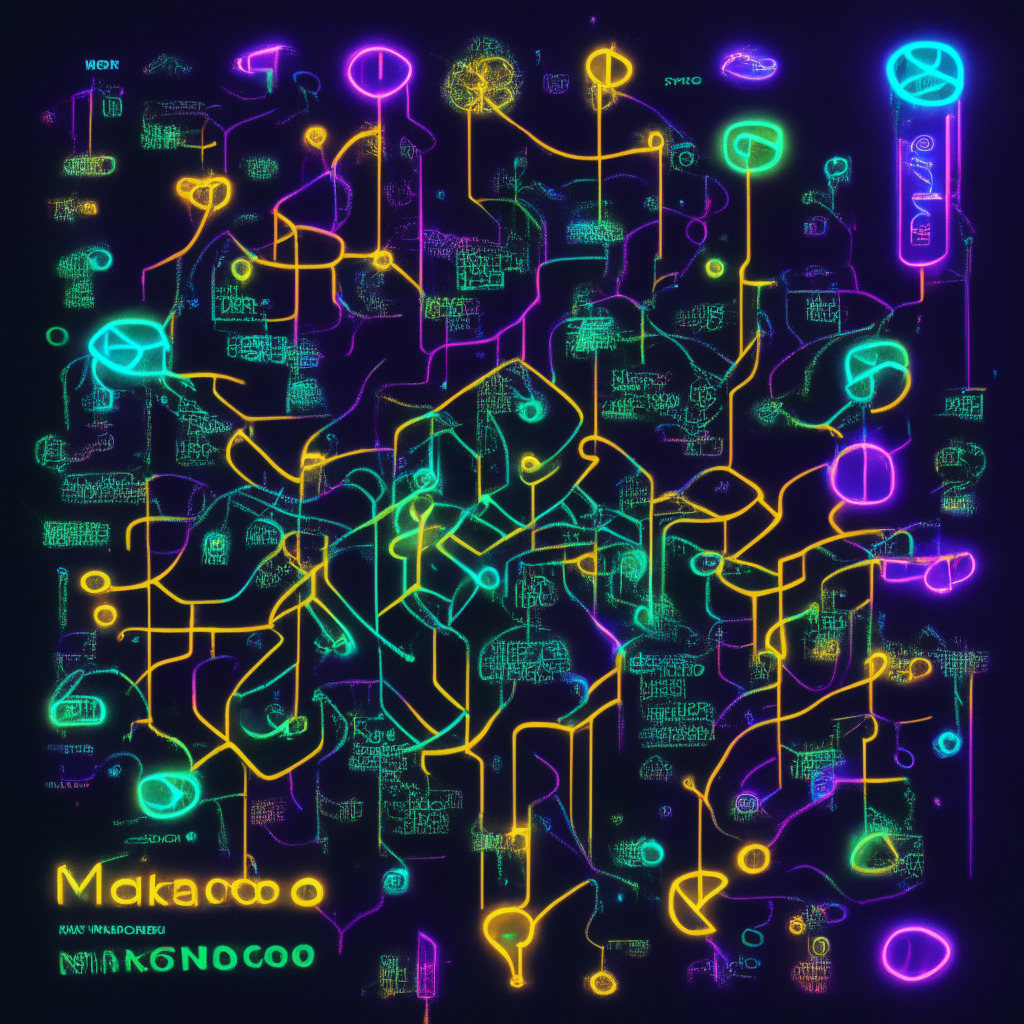Swyftx, an Australian tech venture, has begun a ‘Learn and Earn’ program to encourage understanding of the crypto-market, with rewards for participants. However, the initiative could inadvertently encourage naive investment. Nevertheless, with courses designed to identify scams, Swyftx aims to improve crypto literacy and discernment in a market filled with digital currencies and potential frauds.
Search Results for: Paradigm
Navigating the Financial Landscape: Cryptocurrency Adoption Divide Among World Exchanges
“A study by the World Federation of Exchanges reveals contrasting sentiments within the financial landscape about cryptocurrency integration. With 41% of global exchange respondents now active in cryptocurrency, there’s a significant industry shift. Nevertheless, one-third remain resistant. While retail investors are interested in digital assets like NFTs and stablecoins, institutional investors prefer security tokens and custody services.”
Unraveling the Tax Conundrum in the Metaverse: A Closer Look at Virtual Economies and Policies
Harvard legal scholar, Christine Kim, proposes a shift in tax principles for the ‘metaverse’. Economic activities involving virtual assets could be considered taxable. She outlines models for tax collection, accounting for potential resistance and discusses possibilities for taxing unrealized gains. Managing tax evasion and accurately valuing new assets are identified as challenges.
The European Digital Euro: Monetary Sovereignty Amidst Rising Private Sector Dominance
“The digital euro, a central bank digital currency (CBDC) proposed by the European Commission, is seen as a new paradigm for preserving monetary sovereignty. It would ensure Europeans maintain access to a public payment option, countering the dominance by private payment services’ standalone solutions. However, its implementation requires a balance between fostering innovation and preserving economic stability.”
Debunking the Myth: The Real Energy Consumption of Bitcoin Mining
“The Bitcoin Electricity Consumption Index (CBECI) has significantly adjusted its original estimates of cryptocurrency’s energy appetite. It now suggests Bitcoin network’s total energy consumption is more comparable to US tumble dryers usage. This shift is due to the realization that older mining machines are being decommissioned quicker than predicted.”
MakerDAO’s Blockchain Future: Exploring a Forked Solana Codebase and Risks Involved
MakerDAO’s co-founder, Rune Christensen, proposes the use of a forked Solana codebase to build ‘NewChain’, MakerDAO’s prospective blockchain. Despite connections with Ethereum, this has generated interest and skepticism within the decentralized finance domain. This marks a possible change in direction for MakerDAO’s projects.
Harnessing AI in HR: The Power-Packed Potential and Unseen Pitfalls
“AI is revolutionizing HR, improving efficiency in talent acquisition and retention while predicting potential turnover. However, challenges such as data privacy, algorithmic biases, and reliance on technology remain. The goal is to supplement human expertise, focusing on understanding people’s aspirations and building trust, aided by bespoke AI solutions.”
Crypto Campaign Donations: Revolutionizing Political Funding or Publicity Stunt?
“Crypto campaign donations are gaining traction in the political arena, with key figures including Florida Governor, Ron DeSantis, considering their acceptance. Yet, concerns over their implications prompt considerations for regulations and possible contribution limitations.”
Swimming Against the Current: Bitcoin as a Lifeboat in a Sinking Financial System
“Bitcoin advocate, Luke Broyles, has moved away from traditional investment routes, putting faith in Bitcoin despite its recent value drops. His belief that many sectors like real estate and stocks are overvalued signifies a shift in investment thinking towards cryptocurrency.”
Web3 Gaming Breakthrough: Zynga’s Exciting Foray and Emerging Challenges
“Zynga, a mobile gaming giant, takes a leap into Web3 gaming with the introduction of ZW3 and Sugartown. However, as highlighted at Istanbul Blockchain Week 2023, there are concerns about the adoption and mechanics of Web3 games despite the promising prospects.”
Roadmap to Data Liberty: Tackling the Leap from Web2 to Web3
“Deceptive practices by tech companies prompt the question: Who owns my data and what can be done with it? The shift from centralization to decentralization could confer users with power over their information, promoting data freedom, security, and privacy. However, this transition needs cooperation from parties benefiting from the current system.”
Dwindling Exchange Balances Foreshadow a Maturing Cryptocurrency Market
“The shrinking balance of Bitcoin on centralized exchanges, now at its lowest in half a decade, could signal a new phase in the crypto market. This decreasing reserve signifies growing investor confidence in long-term prospects of cryptocurrencies and a trend towards self-custody. The changing paradigm necessitates exchanges to reevaluate their business models for maintaining profitability.”
Exploring the Forces Shaping Bitcoin’s Spiraling Rise Above $27,000: A Market, Technical, and Global Outlook
“Bitcoin (BTC) has surged above $27,000, a jump many credit to Grayscale’s recent legal victory to turn its Bitcoin Trust into an ETF. Global cryptocurrency market capital grew roughly $50 billion in a day, raising hopes for future growth. Factors such as increasing acceptance of crypto by countries like Netherlands and endorsements by US figures further strengthen the market’s legitimacy.”
Decentralizing E-commerce: Analyzing the Revolutionary Potential of Bison Relay v0.1.8
The introduction of Bison Relay v0.1.8, a decentralized e-commerce system by Decred, is poised to transform digital retail dynamics. With features for enhanced user experience, this platform promotes increased control, improved privacy, and strengthened security in the online retail realm, potentially redefining the e-commerce landscape.
Navigating the Regulatory Labyrinth: New Rules and Fluctuating Tides in Crypto Sphere
“The United States Internal Revenue Service (IRS) is proposing new tax policies for the sale/exchange of digital assets by brokers, attracting criticism from crypto figures. Meanwhile, Gemini, a cryptocurrency exchange, faces a SEC lawsuit on potential regulatory violations. These developments reflect the ongoing struggle to balance regulation with innovation in the emerging field of cryptocurrency.”
Deciphering Blockchain: A Dive into Decentralization, Potential Pitfalls, and Future Acceptance
“Blockchain and cryptocurrencies possess transformative potential for sectors including finance and healthcare, offering advantages like security, speed, lower costs and decentralization. However, they also present challenges: they’re prone to volatility and perceived as potential safe-havens for illicit activities, and may even require centralized regulation for mainstream acceptance.”
UK’s Cold Calling Ban Debate: A Front Against Crypto Scams or Threat to Lawful Operations?
The UK is considering a clampdown on cold calling in financial services, a move hailed as protection against digital asset scams, but may hinder companies relying on this practice. Furthermore, the government, while combating fraud, pledges support for blockchain, seeking to balance consumer protection and fostering industry growth.
Nvidia’s AI Dominance: Potential Boom or Over-Dependence Risk Amidst Crypto Scams?
“The sharp rise in Nvidia’s share prices can be attributed to increasing demand for AI chips. The company separates itself from competitors like Intel and Micron Technologies by focusing on research and development in AI technology. However, as this sector continues to grow, scams target consumers of this technology, underscoring the need for stronger regulations and safety protocols.”
Resilience Amid Decline: Near Protocol’s Recovery and the Promise of AI-Integrated Analytics Platforms
“Despite a -50% loss since April, the Layer-1 blockchain project, Near Protocol (NEAR), has surged by +8%. DeFiance ranks NEAR as the fourth most secured network. NEAR is a potential solid entry with upside growth, although risk looms. Entry into AI-integrated analytics with platforms like Launchpad XYZ could be a promising way to stay proactive during market fluctuations.”
Central African Republic’s Groundbreaking Move: Tokenizing Land and Natural Resources
The Central African Republic (CAR) is advancing its Sango project with the aim of tokenizing land and natural resources. This could simplify procedures like online business visa applications and business establishment. It bears the potential to quicken licensing in sectors such as real estate, agriculture, and natural resource exploitation. However, concerns persist over potential unregulated exploitation and the stability of state-sponsored cryptocurrencies.
Unveiling the Crypto World’s New Star: Analyzing Friend.tech’s Promising Start and Potential Pitfalls
Friend.tech, a decentralized social media platform, is grabbing attention in the crypto community with about 64,500 unique addresses interacting in the initial two weeks. It generated $1.12 million in fees in 24 hours, also allowing users to buy “shares” in social media personas. However, concerns around privacy and longevity remain.
Revolutionizing Multiple Industries: The Future of AI Intertwined with Blockchain Technology
“The combination of AI and blockchain technology could revolutionize industries by powering secure, self-improving data streams. However, integration challenges include scalability, privacy, and the need for skilled personnel to navigate AI algorithms and blockchain protocols.”
Soaring or Falling? Investigating Friend.tech’s Impact on Decentralized Social Media
“Friend.tech, a decentralized social media app on Coinbase’s layer-2 network Base, enables users to purchase ‘shares’ of friends and influencers. Despite concerns over unsustainable growth and share price surge, it has gained over 64,000 users, earning $4.2 million since public launch.”
Merging Finance and Blockchain: eToro’s Radical Shift versus Elon Musk’s Risky Maneuvers
“Yoni Assia, eToro’s co-founder, embraced financial technologies to democratize trading. eToro, under his steer, simplified brokerage account set up, enabling users to start trading swiftly. Influenced by programmer Vitalik Buterin, eToro introduced Bitcoin trading, aiding in a blockchain industry transformation.”
Surprising Shift in Market Dynamics: Oil Now More Volatile than Bitcoin and Ethereum
“Cryptocurrency markets are seeing a surprising shift with Bitcoin and Ethereum becoming less volatile than oil. A factor of this decreased volatility is attributed to geopolitical tensions, economic echoes, and maturation of Bitcoin as market adoption increases.”
The Ripple Effect of PayPal’s PYUSD: Potentially Forcing a Shift in Stablecoin Regulation Debate
The launch of PYUSD, a stablecoin backed by PayPal with over 430 million users, may accelerate crypto adoption and prompt a shift in U.S. policy towards crypto regulation. Despite previous hesitations, the massive user base might force lawmakers to urgently develop a comprehensive regulated framework for stablecoins, heralding a new era of American crypto companies demanding inclusion in economic life.
Redefining Use Cases: The Journey from Crypto Assets to Digital Renaissance
“Crypto progression mirrors how Web2 revolutionized informational accessibility. Decentralized finance (DeFi) pioneers a banking industry catered towards Web3, poised for a crucial paradigm shift. DAOs echo small businesses fostering economic activity, with Humans and AI unified through fintech networks, hinting a digital renaissance. However, challenges persist and must be addressed.”
Coinbase Gets Green Light for Crypto Futures: A Market Disruptor or Flash in the Pan?
“In a significant advancement for the U.S. cryptocurrency market, leading exchange platform Coinbase has received approval to introduce crypto futures. This places Coinbase as the first crypto-centered platform to offer regulated crypto futures alongside traditional spot trading in the US.”
Nova Labs’ Disruptive $5 Month Phone Plan: A Revolutionary Bet on Blockchain and 5G Technology
Nova Labs, a blockchain startup, revealed plans for a $5 monthly phone plan using 5G hotspots owned by individuals and businesses. This service aims to disrupt the telecom industry, supported by the startup’s Helium Network which rewards hotspot owners with crypto tokens for data provided to customers.
Assessing the Potential of Sei Network’s Native Token: A Deep Dive into Its Prospects and Challenges
“The Sei Network’s native token, SEI, made a grand entry with a $1.8 billion fully diluted valuation. Amid market enthusiasm, potential investors are keeping an eye on SEI’s performance. The transaction speed, scalability, and utility of SEI tokens on various platforms could determine its future valuation. Cryptocurrencies like SEI play a significant role in digital economies, and market watchers eagerly await its impact on the dynamic digital paradigm.”
Shifting Political Winds: Potential Impact on US Crypto Regulatory Landscape Post 2024 Election
Recent comments from former SEC official John Reed Stark suggest potential changes to U.S. crypto regulation influenced by party politics. Stark attributes a pro-crypto regulation shift to a possible Republican win in 2024, ending current SEC chair Gensler’s tenure, and potentially paving the way for Hester Peirce, known for her softer stance on crypto.
Blockchain Paradox: The Potential and Pitfalls of BTC, ETH, BNB, XRP, ADA and USDT
“The world of cryptocurrency, including BTC, ETH, BNB, XRP, ADA, and USDT, hold opportunities and threats. Volatile prices hold promise for vast returns but can present disastrous losses. While cryptocurrencies offer solutions, their susceptibility to hacking raises security concerns.”































